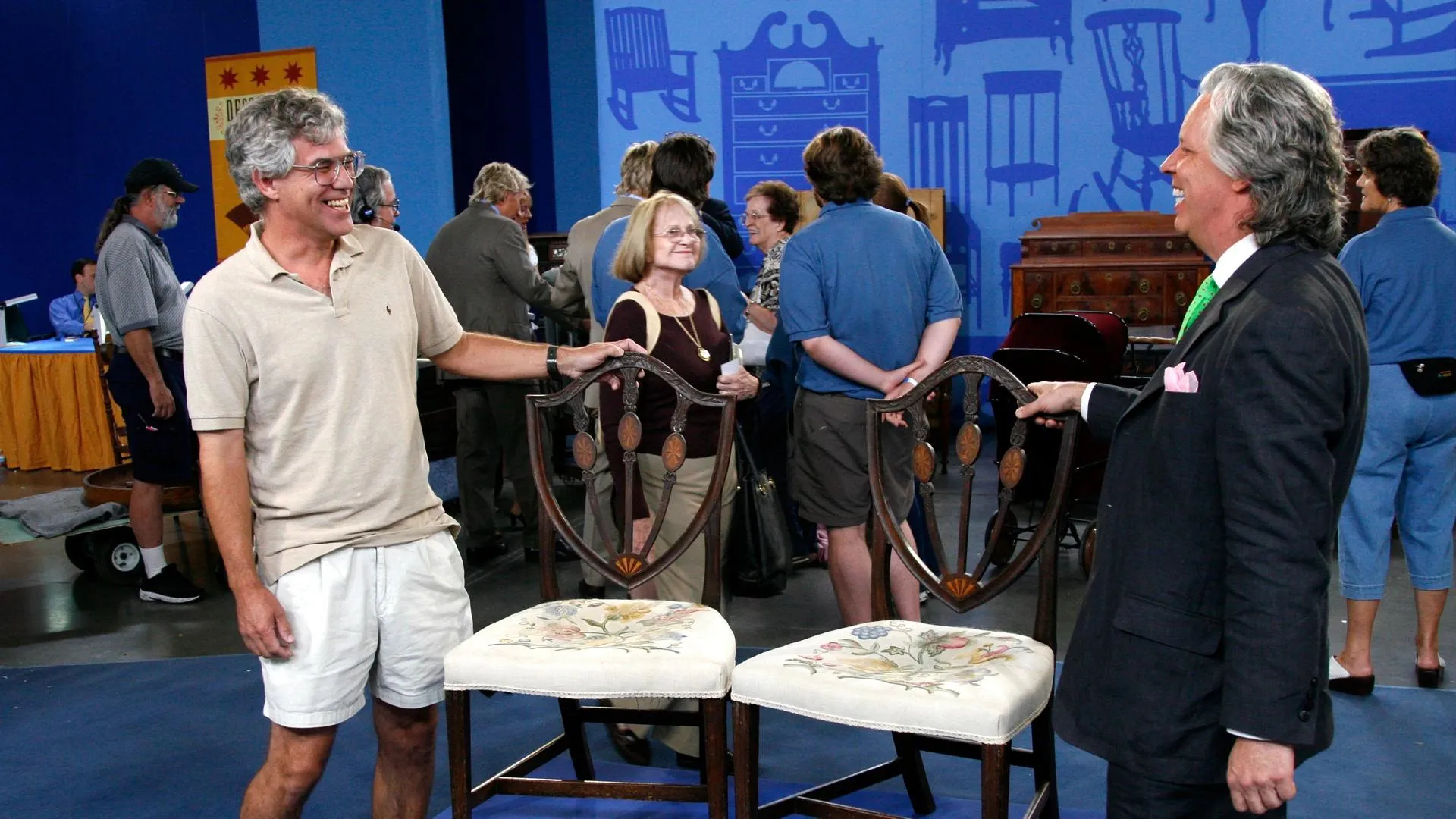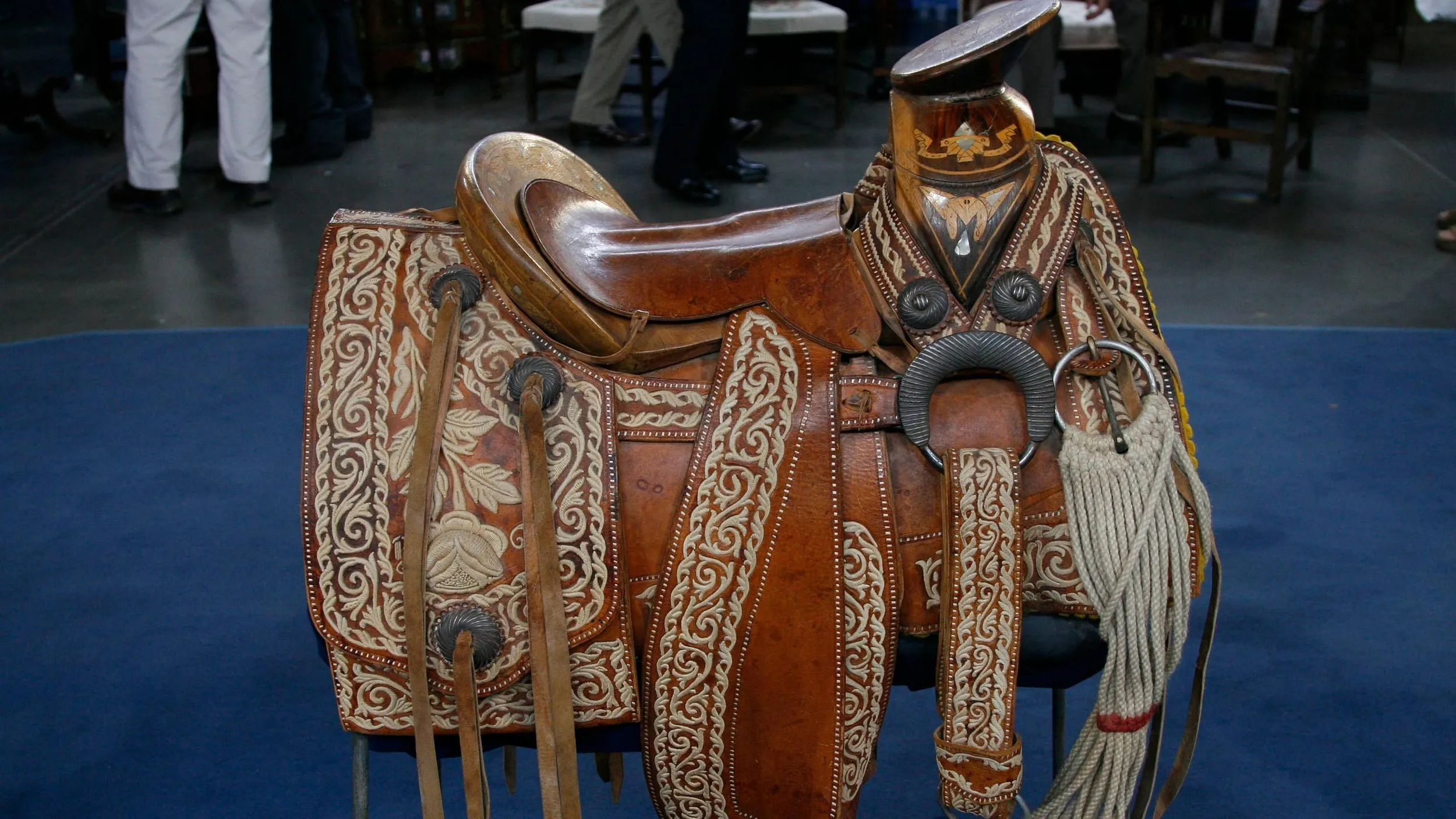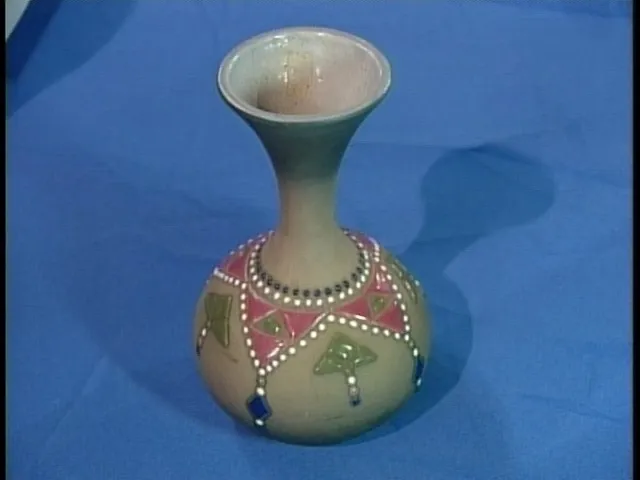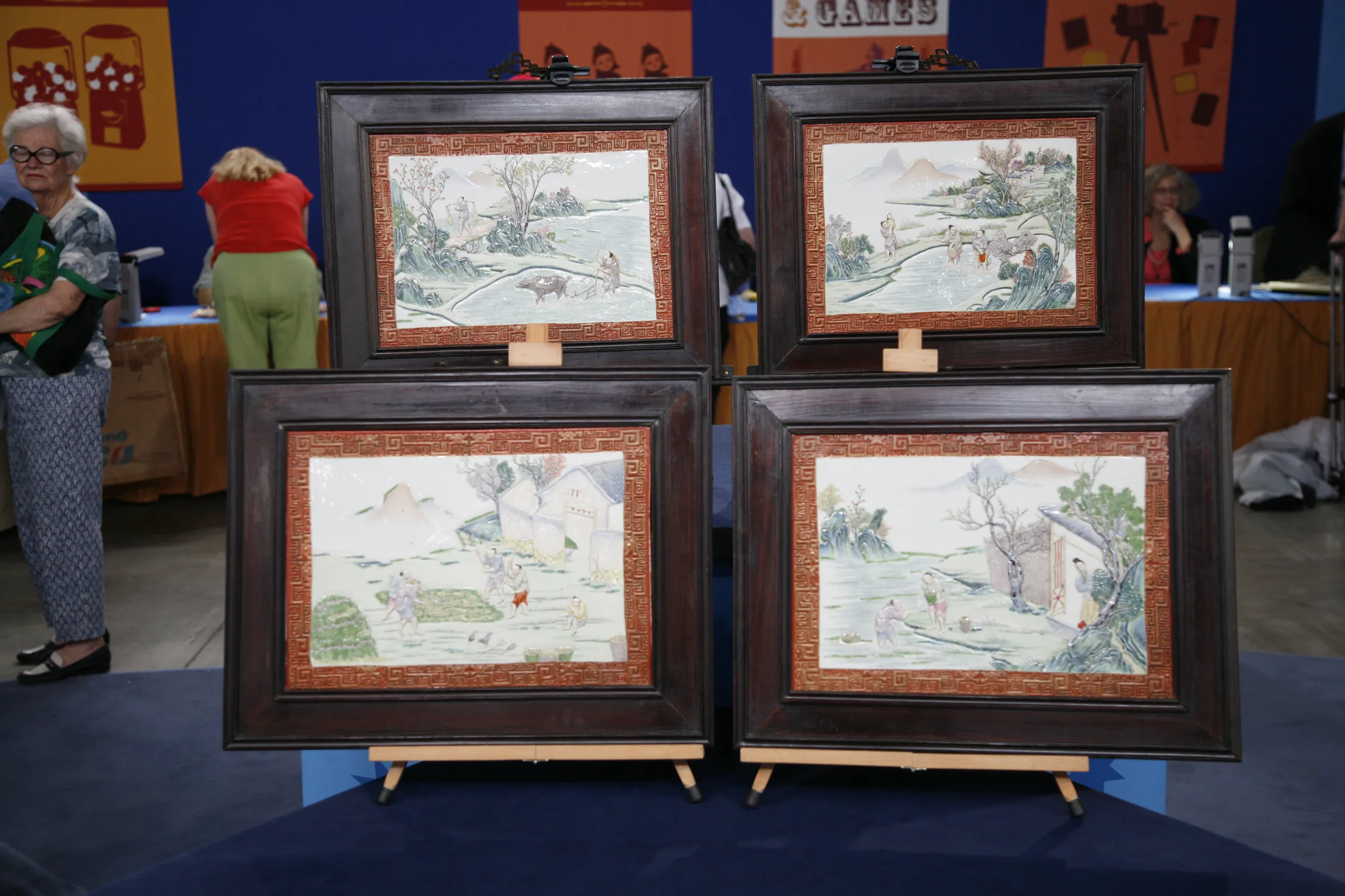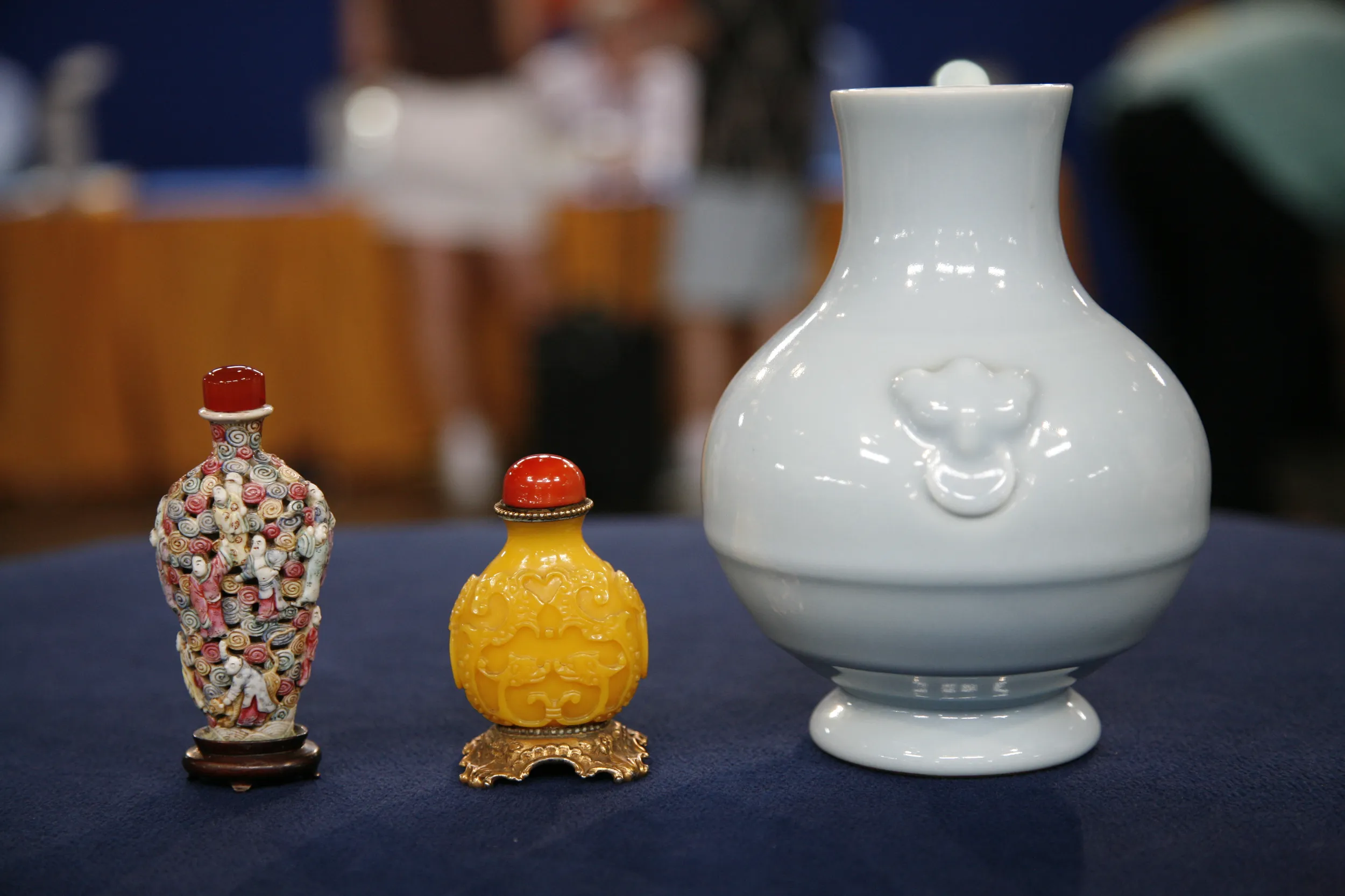GUEST: Someone had passed away, and I was invited into the home. And the maid was sitting in the kitchen, and I talked to her a bit about the people that had lived there, although I didn't know them. And she mentioned that there was some lovely china up in the kitchen cabinet. So I asked if I could look at it, and they opened up the cabinet. And lo and behold, this is what I found, and I said, "I'll buy it."
APPRAISER: What we're looking at is a collection of painted English teawares. This is oftentimes called a trio, because you've got a teapot, creamer, sugar. But in this case, you have cups and saucers. What is important about this particular service is that each piece has a hand-painted scene right in the center here, okay?
GUEST: Beautifully done.
APPRAISER: Absolutely gorgeous. This is really the best of what England had to produce in this time period, which is the Regency time period, around about 1815, 1820. Now, can't you just imagine wandering around these sort of bucolic landscapes? They're absolutely gorgeous, and a lot of these painters now are identified, but they didn't sign their works then. They were employed by the factories. So you had a great deal of research that goes on later to tell people how great these English porcelain artists were. What is good about this, on the front, on each piece, is that you have the scene here.
GUEST: Yes.
APPRAISER: But what is also really important in a condition perspective is that it's got the beautiful cobalt blue background here...
GUEST: Yes.
APPRAISER: And the gilding, which is in absolutely wonderful condition. It might have been that these only got used on the very most important special occasions, so they didn't see a lot of wear, and oftentimes, when you stack the dishes together, you'll get what's called stacking wear on the gilding. You don't see that here. Now, on the back, you have the English titles. This is "In Cumberland" and it has the Crown Derby mark.
GUEST: Yes.
APPRAISER: And the fact that they're titled and they're not anonymous is really important. Anything that is titled like this is topographical and an actual scene. So that's also very much a plus to what it is. Now, we, we talked about the condition issues. And I wanted to point out one more thing here, and that is on the creamer. It has what are called staple repairs.
GUEST: Yes.
APPRAISER: And staple repairs are, to our eye today, very, very harsh repairs, but that was considered a very acceptable repair in the late 19th century. So we look at it now and say, "Hey, we can undo that and redo it." You only brought a representational set of what you have here, but I would say that what is on the table is probably worth around $3,000.
GUEST: My goodness. Well, I have seven teacups and eight coffee cups and eight deep saucers and a creamer and a tray and a teapot.
APPRAISER: So you've got a lot of extra stuff.
GUEST: Oh, I have quite a bit.
APPRAISER: Okay.
GUEST: But I didn't want to bring it all down.
APPRAISER: Well, assuming that's all in good condition...
GUEST: It's all, this is...
APPRAISER: ...and I'm just saying, I'm not seeing that, I would say that the set together at auction would bring around $6,000.
GUEST: Hm!
APPRAISER: Not a bad investment for $250.
GUEST: No, but it wouldn't be for sale, either.
(both laugh)

